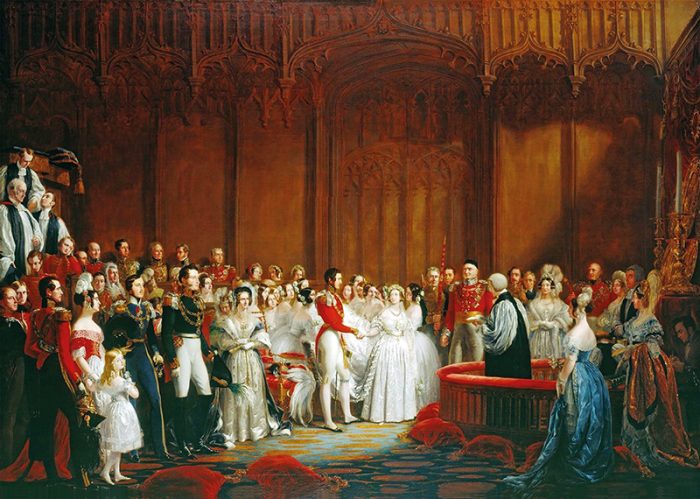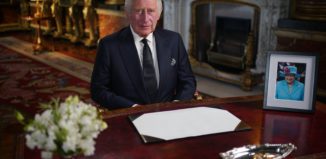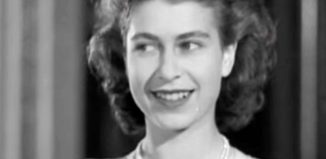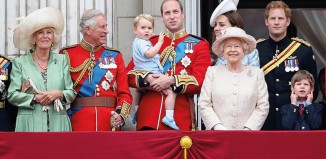Victoria and Albert: A Royal Affair
Rose Bateman explores the marriage of Victoria and Albert, the dynastic match turned love story which would help to define an age
Oh!” Victoria confided to her diary, “to feel I was, and am, loved by such an Angel as Albert was too great a delight to describe! he is perfection … Oh! how I love and adore him I cannot say!” The year was 1839, and – in accordance with queenly protocol – the young monarch had just proposed to her German first cousin, Prince Albert of Saxe-Coburg and Gotha.
Engagement
His acceptance had been unhesitating. That such desire inflamed their mutual admiration was a boon; after all, Albert’s uncle Leopold of Saxe-Coburg and Gotha and King of the Belgians (also Victoria’s uncle) had set his cap at the British queen for one of his two nephews many years previously, when both were just children. Cool pragmatism it may have been, but Leopold understood that the canny union would strengthen his family’s influence in Europe.
Amid such expediency, it fell to the match-made cousins to supply the romance, which, duly, they did, despite Victoria’s naturally cautious nature. As a young princess, her childhood at Kensington Palace had been dominated by the tight shackles of her overbearing mother, the Duchess of Kent, along with her ambitious advisor, Sir John Conroy.
There, Conroy – keen to be seen as the power behind the throne should Victoria’s mother have become the regent – subjected the young princess to what became known as “the Kensington system”. In practice, this meant a strict timetable of improving lessons and minimal contact with other children.
As a consequence of the stifling regime, when Victoria finally acceded to the throne in 1837, her first wish was to eliminate such claustrophobic strangleholds. The last thing she wanted to do was to make a hasty marriage to a domineering man.
But despite her resolve not to rush into an imprudent alliance, Victoria found herself smitten. Her first meeting with Albert came at the behest of her mother when, on the princess’s 17th birthday, the Duchess invited him and his elder brother Ernst to Kensington Palace.
Immediately, Victoria was appreciative of his fine, Teutonic looks, as well as his musical abilities (the duo played piano duets together) and later wrote to her uncle to tell him that Albert’s departure had caused her to weep piteously.
Neither was this was appreciation unilateral. For his part, Albert sent his young paramour gifts from the Continent and wished her “a long, glorious and happy reign” upon her coronation at Westminster Abbey. Having acceded, however, Victoria was in a more cautious frame of mind, taking her time to invite Albert and Ernst to England a second time. When she did receive them, this time at Windsor Castle, all notions of restraint dissipated the moment she saw the prince; just a few days later, Victoria proposed to Albert in a private room in the castle. Leopold’s plans for his nephew had borne fruit.
Teething problems
Victoria and Albert’s engagement was a happy one; no opportunity to dart into private corners for clandestine clinches was foregone. There was, however, one bone of contention: what exactly Albert’s role and rank would be and, moreover, how much he would be paid. It was a power struggle some maintain lasted throughout the marriage, despite the couple’s great and abiding love for one another; as Albert opined, “I am very happy and contented; but the difficulty in filling my place with the proper dignity is that I am only the husband, not the master in the house.” But there was a resolution; in spite of some public disdain at the idea of paying for a foreign prince, Albert was invested with the Order of the Garter in 1840. His many great works later on saw his reception among the British public redeemed.
A royal wedding
In February, 1840, crowds thronged the streets from Buckingham Palace – where Victoria set off in a procession of carriages – to St James’s Palace, where the first reigning queen since Mary I wed her beloved prince in the Chapel Royal at 1pm.
She wore white silk satin and lace, a white veil and a diamond necklace as she glided up the aisle to Handel’s “See, the Conqu’ring Hero Comes”, holding orange blossom and with 12 bridesmaids carrying her train. There to meet her at the altar, Victoria’s hero looked dashing in a British field marshal uniform. After the ceremony, guests repaired to Buckingham Palace (where Victoria had moved to escape her mother) to feast on a gargantuan cake weighing 300lb. The wedding had been a triumph, in the eyes of the public and the couple. Victoria wrote of it as “the happiest day of my life”. The wedding night was, in her own words, “most gratifying”.
Empire building
It is a given that the role of head of state rarely allows for indolence. But the assiduous tenor of Victoria’s reign was surely marked, even for a monarch. Unlike some of her predecessors, the Queen eschewed frivolity and indulgence in favour of industry (literally speaking, her reign coincided with the Industrial Revolution).
She and Albert produced nine children over 18 years despite her professed hatred of pregnancy, which entailed domestic and bodily grind. In addition, Victoria reigned over the British Empire at its apotheosis, equating to some 450 million people, stretching from Canada to the Caribbean, and incorporating Africa, Australia, New Zealand and India; of the latter she was also Empress.
Amid this time of unprecedented industrial, scientific and military progress, Victoria consulted those in her inner circle for counsel and, in her youth, prime minister Lord Melbourne had been so influential that Victoria was archly dubbed “Mrs Melbourne”. But increasingly, it was Albert who became her advisor-in-chief – even persuading his wife to take a more constitutional role in leaving the running of the British Empire to Parliament, thus setting a precedent for the politically impartial monarchy that we know today.
Royal escapes
Despite Victoria’s abstention from the more permissive pleasures of some of her predecessors, she and her husband nonetheless needed some respite from their onerous workload. Integral to this reprieve was Osborne House on the Isle of Wight, the palatial holiday home Victoria and Albert bought from Lady Isabella Blachford in 1845. Of it, Victoria said: “It is impossible to imagine a prettier spot.” Today, it remains perhaps the most intimately reflective of the couple’s tastes.
The pair commissioned architect Thomas Cubitt (also responsible for the façade of Buckingham Palace) to rebuild the main house in the style of the Italian Renaissance, which they paid for chiefly from the sale of the Royal Pavilion in Brighton. The prince was taken with the garden terraces since their views across the Solent reputedly reminded him of the Bay of Naples. The principal apartments hold many artefacts that speak of Victoria and Albert’s empirical and dynastic links (gifts from Russian Tsars, paintings of scenes depicting the British Raj), but the private apartments touchingly nod towards this being an intimate family home, where the children were allowed frequently into their parents’ bedroom (at the time, it was customary for aristocrats to live at a remove from their offspring).
It was a happy place. The couple’s nine children learned to swim in the sea at Osborne House’s private beach and spent happy hours collecting shells. Even after Albert’s death, Victoria returned here for a further 40 years. Despite owning a myriad of homes – including Balmoral, to which the couple regularly escaped having renovated, reputedly, chiefly in tartan – Osborne remained the Queen’s favourite residence.
Albertopolis
While his wife was busy commanding the Empire, Prince Albert wasted no time in making his own mark on history. He became President for the Society of the Extinction of Slavery (which had been abolished throughout the empire, but not in America or the French colonies); he took on the role of Chancellor of the University of Cambridge; and was placed in charge of the renovation of the Palace of Westminster. The project he will, however, be chiefly remembered for was the Great Exhibition of 1851. A great champion of global industry, Albert – along with civil servant and inventor Henry Cole – built the Crystal Palace, designed by Joseph Paxton, in Hyde Park as a platform for countries around the world to display their greatest industrial achievements. It attracted the great and the good – from Charlotte Brontë to Charles Dickens, Alfred Tennyson to Lewis Carroll – as just some of the many thousands who thronged the exhibition hall (over six million people are estimated to have attended). The Victoria and Albert Museum was founded as a repository of exhibits from the Great Exhibition. As Victoria presided over British expansion throughout the world, Albert’s achievements complemented hers, reinforcing Britain’s status as a global industrial power for the first time.
Albert’s death
Victoria and Albert narrowly escaped death together twice, when they were shot at by would-be assassins (both times the couple emerged unscathed and were praised for their cool handling of the situation). But when death did come for Prince Albert, it was at the far more prosaic hands of typhoid. He breathed his last at 10.50pm on 14 December 1861 at Windsor Castle at the age of 42, leaving his wife stricken with grief.
Although she herself would live until 1901 – she has only recently been surpassed as Britain’s longest-reigning monarch by HM the Queen – Victoria wore the black she is so associated with for the rest of her life. But it was not the Victorian way to idle the years away in mourning. As a monument to the love she felt for her husband, she oversaw the building of the Royal Albert Hall, in accordance with his plan “to promote understanding and appreciation of the Arts and Sciences”.
Opposite that sits the Albert Memorial, designed by George Gilbert Scott, which depicts the Prince Consort ceremonially seated and holding the catalogue of the Great Exhibition. The elaborate vision in gleaming gold is, perhaps, the finest of mementoes to an enduring, consuming and abiding love.








